The house is set in grounds of around 3+ acres on a steep wooded slope overlooking the River Wey surrounded by the famous water meadows where horses roam. Direct access can be made to the ancient Greensands Way public footpath, which forms Warren House's lower boundary, and then onto the newly refurbished Moor Park Heritage Trail with its spooky Mother Ludlam's cave, the World War Two gun positions and the fabulous new Wildlife Trail over duckboards through the bogs surrounding the River Wey.
2019 - Update. All the trees on the lawn to the right had fallen down! You can see what we now refer to as 'The Grandson Tree' where we have left the stump as a refuge for many birds and other wildlife.
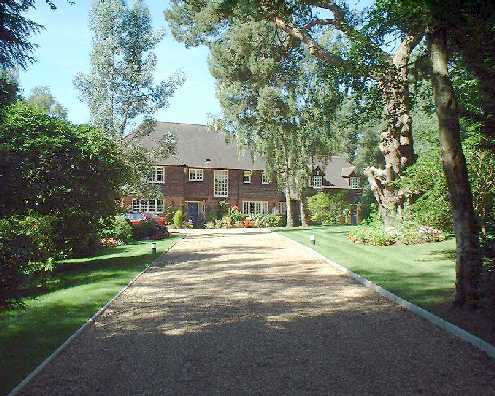
This best views are in the winter.
When we moved in in 1998, only the garden close to the house had
been maintained. The vast majority of the garden was a completely impenetrable
steep slope covered in bracken. It took several seasons before we hacked
our way to the bottom for the first time.
2019 - Update. The trees have really grown. Which is a shame as much of the view is now obscured
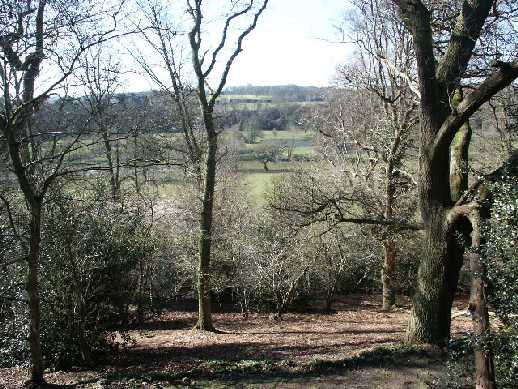
In 1998 we spent most of the time in completely refurbishing the house and building new extensions which nearly doubled its size.
After the builders had left
we concentrated on the formal gardens immediately surrounding the house.
The garden is the home for deer, foxes, loads of rabbits, rodents of every
description, bats, snakes and the most superb variety of birds; including green and
spotted woodpeckers. Although we love them, they mean that many plants do
not survive long if planted out. Therefore throughout the year over 300
pots and hanging baskets of various sizes are maintained. See
photo bottom RHS.
2019 -
Update. Again the trees (in this case the 'Two Sister'/Silver birches you
can see) have had to be felled as they were dangerous.
Still maintain all those pots and hanging baskets. Indeed, probably more.
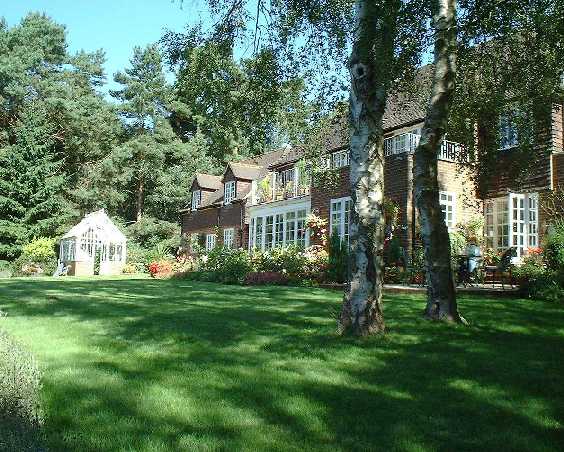
In 2000, we decided to redesign
the garden. We wanted to be able to explore all parts of it - so we
built a set of steps on the right (95) and back up on the left (97).
We built three horizontal paths too so you can spend as long as you like
going round in circles up and down the paths.
We built two belvederes - from which you can sit in peace and look
at the stunning view.
We wanted a flat lawn too - so that we could have a marquee if we wished.
2019 - Update. Flat lawn came in useful for Louise & Neil's wedding on 22nd Aug 2002. And for other summer parties since. looks pretty much the same today.
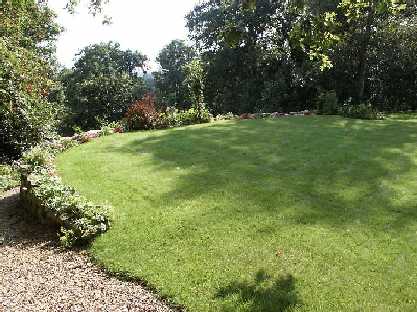
As it turned out it was cheaper to have a pond and bog garden dug at the same time so that the soil removed could be used to create the lawn.
All in all we planted over 2000 new shrubs and trees - most of which we will never see in their full glory.
We hope that you will enjoy
looking around the garden in more detail on this web site. You can view:
- the garden in each of the different seasons
- each part of the garden; the pond, the bog garden, the steps,
woodland, pots etc.
- the plant types, the rhododendrums, daffodils etc.
The garden was open to the public under the National Gardens Scheme on 8th June 2003.
2019 -
Update. We opened the garden once more for the NGS. But it was all too
much of a hassle - particularly the parking and the refreshments.
The pond banks have grown significantly since and the water level is
somewhat lower. Indeed I think we have a leak!
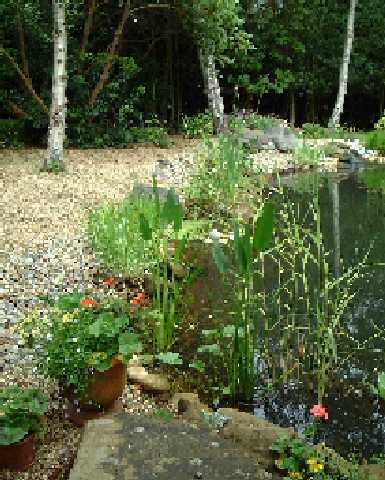
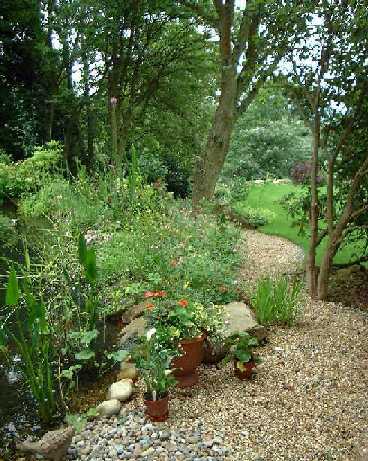
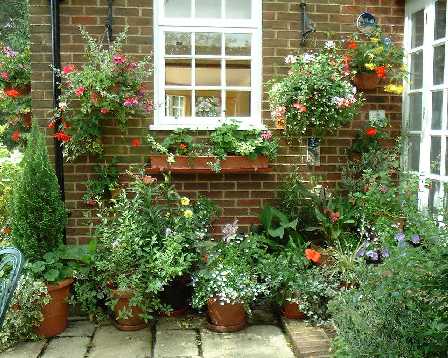
Pond
Pots by kitchen door in
2002.
Looks much the same in 2019